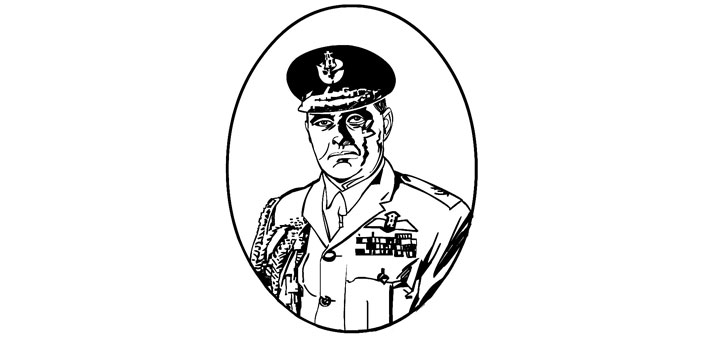The indomitable flying man (1921-2015)
Hrushikesh Moolgavkar was born on 14 August 1921 in Mumbai, and was commissioned into the Royal Indian Air Force (RIAF) on 30 November 1940, in the rank of an acting Pilot Officer. He was sent to No. 1 Squadron in the war zone in Burma, flying Hawker Harts, and soon converted to Lysanders. The Squadron moved to Toungoo airfield for operations against the Japanese in January. Moolgavkar was lucky to be engaged in operations and soon established a reputation as a keen pilot who loved flying. In January 1945, while operating from Howe, near Cox Bazaar, he took off in a Spitfire and faced a sudden failure of the engine. He tried to force land on the beach. The aircraft rolled over and lay upside down in shallow water. He was hanging upside down still in his straps. He faced death due to drowning as the tide rose. Two British commandos noticed the aircraft and pulled Moolgavkar to safety. He suffered injuries in the spine and spent six months in plaster. He had completed 280 hours of operational flying in Burma. After return from Burma, he was posted to No. 4 Squadron flying Hurricane and Spitfire fighters.
Known for his flying skills, he was especially chosen to lead the fly past on our first Independence Day. Thus, Squadron Leader Moolgavkar led a formation of Tempest II aircraft just over the Flag Posts at the time our national anthem was played and the national flag hoisted on 15 August 1947. Next day, he led a similar fly past, trailing the tri-colour, over the Red Fort.
He was detailed to attend the Staff Course at Wellington in 1948. He took over the command of No. 1 Operations Wing at Srinagar in September 1948 with the responsibility of planning and executing close air support to the Army during the battle for Zojila Pass. He flew many sorties himself under difficult conditions. His drive and leadership enabled the Air Force to provide effective air support for capturing Zojila. He was awarded MVC for exceptional gallantry and was one of the four MVCs awarded to the Air Force for Kashmir operations. In 1949, he took charge of the newly formed Air Testing Unit (ATU) which received four Vampire F3 fighter bombers. These were the first jet fighters in an Asian air arm. He was one of the earliest pilots to convert to Vampires. Promoted to the rank of group captain in 1951, he was Director, Operations, and went to France two years later to evaluate Ouragon planes. He had many firsts to his credit in his career: He led the first flight of Ouragon aircraft to India, was the first Indian to fly a Mystere II fighter bomber faster than sound, and fly the Midge fighter which later became Folland Gnat. He went through the routine command and staff appointments and took over the command of Western Air Command in 1973, and was awarded PVSM in 1976 for distinguished service. He took over as Chief of Air Staff on 1 February 1976.
He was always known as a stickler for flight safety. He implemented several rules and reforms and brought down the accident rate in the Air Force to within International Safety Standards. During an official visit to Washington DC, he was presented the Legion of Merit for having “contributed immeasurably to Indian-American friendship”, thereby reflecting great credit upon himself and the Indian Air Force. Air Chief Marshal Moolgavkar was acknowledged to be an ace pilot throughout the Indian Air Force. He kept his flying status even when he was Chief of Air Staff and flew until the day he retired. In his entire career in IAF he had flown 67 different types of aircraft including fighters, trainers, jets and proto types and right from the Tiger Moths and Hurricane to MiG-21 and Sukhoi-22s. He retired on 31 August 1978 and settled down in Pune. He dictated his experiences to his daughter Jyoti Rai, which has been published under the title of Leading from the Cockpit: A Fighter Pilot’s Story. He was admitted to the Command Hospital on 29 March 2015 and passed away on 15 April 2015. He is survived by his son Dr. Prakash Moolgavkar and daughter Jyoti.

